How To Sell Videos Online
We live in a video-first world right now.
Thanks to the COVID-19 pandemic, more people are glued to their screens and hungry for different types of video to stream.
They want to learn, be entertained, get fit, and engage by streaming videos from the content creators they love. That means one thing:
There has never been a better time to sell videos online .
If you've got an idea for a video-driven business, and want to start earning $5000+ a month from sharing quality content with your audience, then you've come to the right place.
In this article, we're going to show you the 12 steps you need to take to sell videos online successfully, and share the platforms and tools you can use to supercharge your business.
Let's go…
No time to read this article now?
Download a free PDF version of this blog post (all tips and links included).
How To Sell Videos Online In 2021
- Find Your Video Niche Topic
- Plan Your Content
- Choose A Video Monetization Platform
- Pick A Payment Structure
- Create Your High-Quality Video Content
- Upload Your Videos
- Organize Your Content
- Customize Your Video Website
- Setup Your Marketing Tools
- Promote Your VOD Platform
- Add Emotional Experiences With Live Streaming
- Expand Your Offer With OTT Apps
Click here to watch the video -> youtube.com/watch?v=g1pk4fcNO78
1: Find Your Video Niche Topic
The first step in creating your own video-on-demand business is to determine exactly what kind of videos you want to sell. As our founder, PJ always says:
This means you need to decide on the niche you want to operate in, and the audience you want to reach. Thankfully when it comes to video the possibilities are endless.
We've seen successful businesses start in a wide range of niches like:
- Health and fitness.
- Online learning.
- Entertainment.
- Faith and spirituality.
- Yoga and lifestyle.
- Arts and crafts.
- Kids content.
As well as lots of sub-niches that combine or operate in the spaces between them. For example, take a look at Art For Kids Hub:

They've built a successful video streaming business at the intersection of 3 different niches: online learning, kids content, and arts and crafts.
Their subscription platform teaches kids the basics of art through fun and engaging video tutorials that can be streamed to desktops or their native iOS and Android OTT apps.
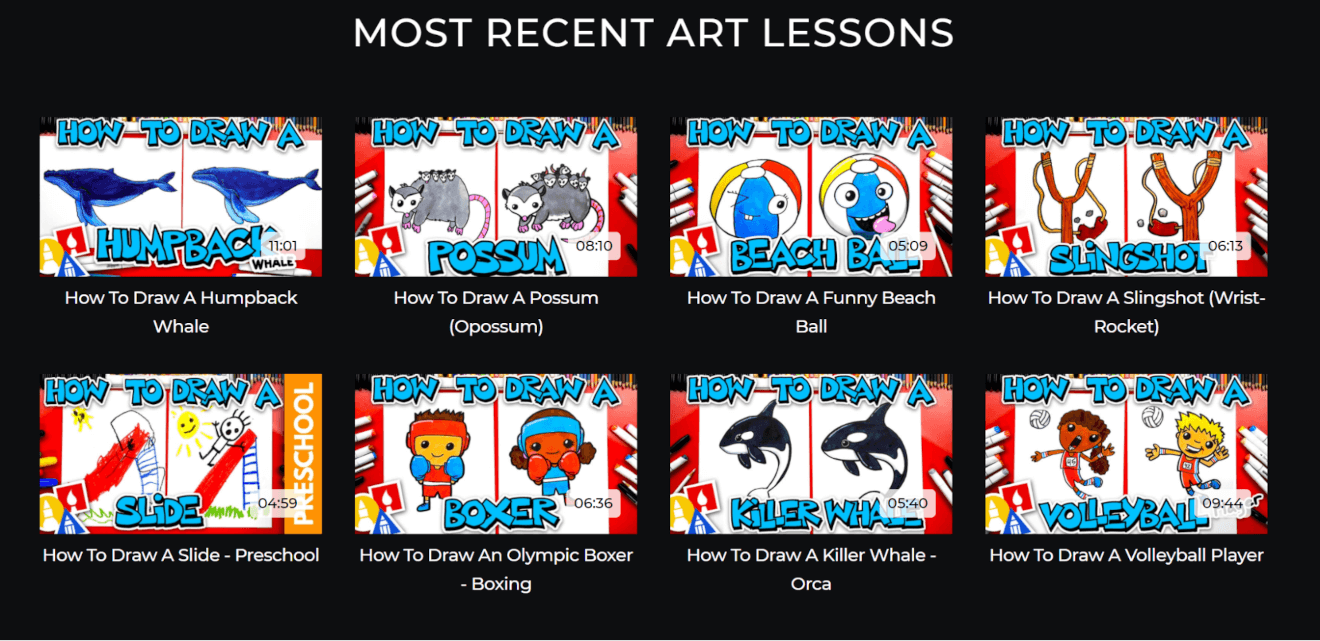
This combination lets them carve out their own space for video content where they can reach a specific and targeted audience. This makes it much easier to create and sell videos online!
A great way to find your niche is through testing.
To see if your idea is a money-making one, try offering free videos through a YouTube channel and gauge the reception.
You can also do some heavy research on video sites like YouTube, Udemy, and even social media platforms like TikTok to see if there is demand for your content.
Chances are if someone else has been able to create and sell videos online in the niche, it's a product people will be willing to pay for!
If you want to learn more about how to niche-down your content, take a look at our guide below:
2: Plan Your Content
Once you've found your specific niche you need to get clear about who your audience is and what content they want to see.
You can begin to better understand your audience and their needs by answering the following questions:
- What common themes do your audience share? (Age groups, interests, lifestyles, etc.)
- What does this audience want from watching your videos? (eg. entertainment, education, increased fitness, etc.)
- What can you bring to your niche that your audience wants that nobody else is providing? (Think of this as your unique selling point.)
The answers you get will help you get an initial understanding of who you should be aiming your content at, and allow you to generate some early topic ideas.
If you want to learn more about understanding your audience, you can read our guide on finding your product-market fit right here.
But if you feel confident that you understand your audience and their needs, you can start planning the videos you want to create.
The specifics of what you should include in each video are a little beyond the scope of this article. But, we can help you with how to deliver your content.
Your niche will have specific needs for the length of videos you post, as well as the entire size of your content catalog and how it's organized.
For example…
Let's say you create educational videos. Your audience is going to have some pre-existing expectations of how that content is presented.
Online courses are typically broken down into different modules that tackle skills of increasing difficulty. You can see how InkWorkshops does this for the tattoo tutorials right here:
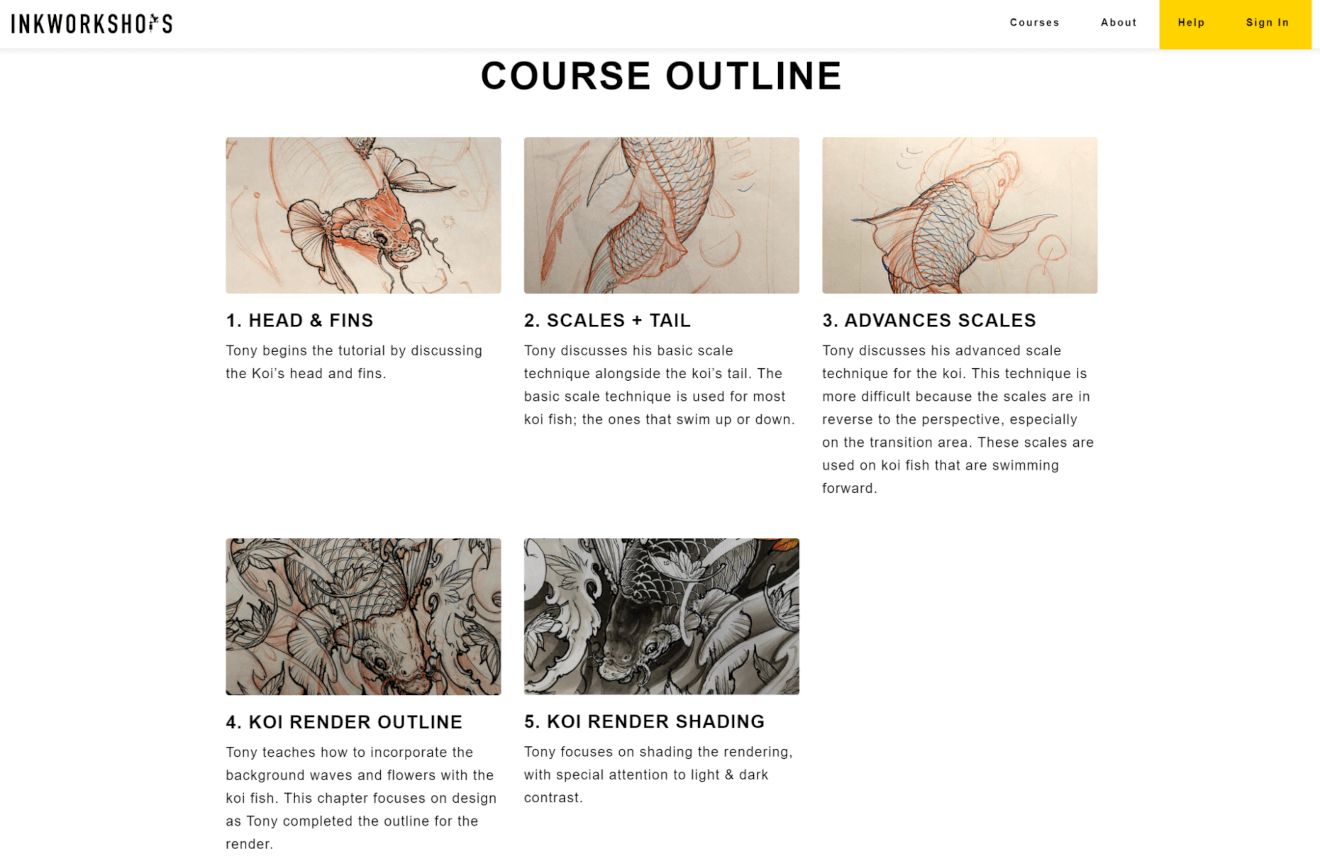
Data also shows that online learning students have shorter attention spans, so they typically favor step-by-step video courses that have short modules and clear takeaways.
Because of that, your tutorials or online lessons should be between 3 and 25 minutes long. Though, it's safer to stick to the shorter end of that spectrum!
You can see the same variations in content like fitness, where you might choose to focus on a specific body part of creating sessions around workout durations. (20 minutes of HIIT anyone?)
Take the time to research right for your audience and niche. You can start by checking out our guide to content shock below, where we show the best frequency to upload your content:
3: Choose A Video Monetization Platform
The next step is to choose your video monetization platform.
You need a place that allows you to upload, share, and monetize your videos. And, we highly recommend you choose a provider that specializes in video websites and apps.
Though general website builders are great and have their place, you need a specialized platform – one that specializes in video hosting and video selling!
Uscreen is a great example of this:
Click here to watch the video -> youtube.com/watch?v=fxAZYn6gj74
We have everything you need to start, launch, and grow your video business. With us, you can:
- Create your own video website.
- Upload and organize your videos with ease.
- Distribute your content with OTT apps on TV and mobile devices.
- Monetize your content, your way.
- Accept worldwide payments.
- Use live streaming to reach audiences on any device.
- Track subscriber growth and churn.
- Own your audience.
Better still…
We're currently the number one platform in the industry and our customers earn an average of $5000 a month!
But…
We also know Uscreen isn't the right choice for every video business, so you should take the time to shop around and find the VOD platform that's right for you.
4: Pick A Payment Structure
With your platform in place, time to start thinking about how you want to monetize and sell your videos. This is perhaps the most important step toward learning how to sell videos online!
There are 3 monetization strategies to choose from when selling videos online:
- SVOD : subscription video on demand
- TVOD : transactional video on demand
- AVOD : advertising video on demand
Let's take a closer look at each of them…
SVOD : Subscription Video On Demand
The SVOD, or Subscription Video-On-Demand, monetization model gives subscribers full access to a video library for a recurring monthly or annual fee.

This business model has become incredibly popular because of its convenient nature to both video sellers and consumers.
You probably recognize some big-name brands that use it, and the different monthly pricing options they offer:
- Netflix
- Amazon Prime
- Disney+
- Hulu
- Roku
In fact, industry reports show that viewers spend 65% of their time at home watching SVOD services. And, that includes more than just the big entertainment platforms above.
People are signing up to subscription platforms in all of the niches we mentioned earlier, so they can have more control over the content they watch.
We've seen this business model go on to make $5000+ a month in a wide range of niches, and it's one of the best possible options to build a stable and consistent income.
You can read about some of our successful subscription video clients in the Uscreen Spotlight articles below:
- How TEDxCambridge Built a Digital-First Experience With Uscreen
- How Unicorns.LIVE Built an Inclusive Global Streaming Community
- How Body Harmonics Became an Online Pilates Powerhouse
TVOD : Transactional Video On Demand
TVOD, or Transactional Video-On-Demand, uses a pay-per-view format. Customers make one-time purchases to access specific content.
A good example of this would be buying full seasons or individual episodes of your favorite TV shows through Amazon Prime or iTunes for your Apple TV.
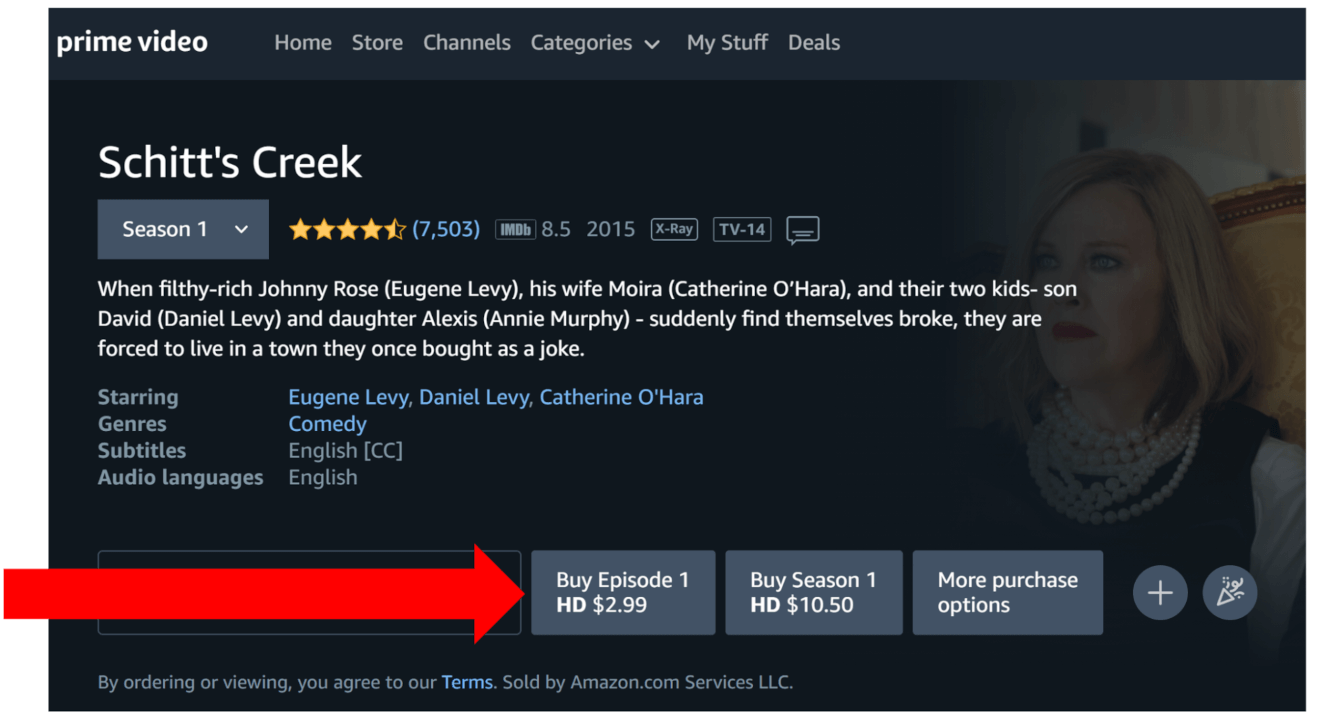
TVOD-based businesses can make more money upfront by charging a slightly higher fee per purchase.
This model can be effective if you're offering one-time transactions that are time-bound or live, which is why we often see it used for big sports events like boxing matches!
But…
In this model, TVOD businesses have to make sure the quantity of purchases stays high enough to earn a steady profit – and that can be hard work.
AVOD : Advertising Video On Demand
AVOD, or Advertising Video-On-Demand, is essentially "free" for viewers because there's no up-front cost to watch.
AVOD revenue comes from businesses paying to advertise with short commercials throughout your videos.
This is a familiar setup for viewers because it feels like traditional cable TV, where they tune in to watch shows for the "price" of watching ads.
The platform that's been the most successful with this has been YouTube. You've probably noticed the ads that pop up before, during, and after videos:
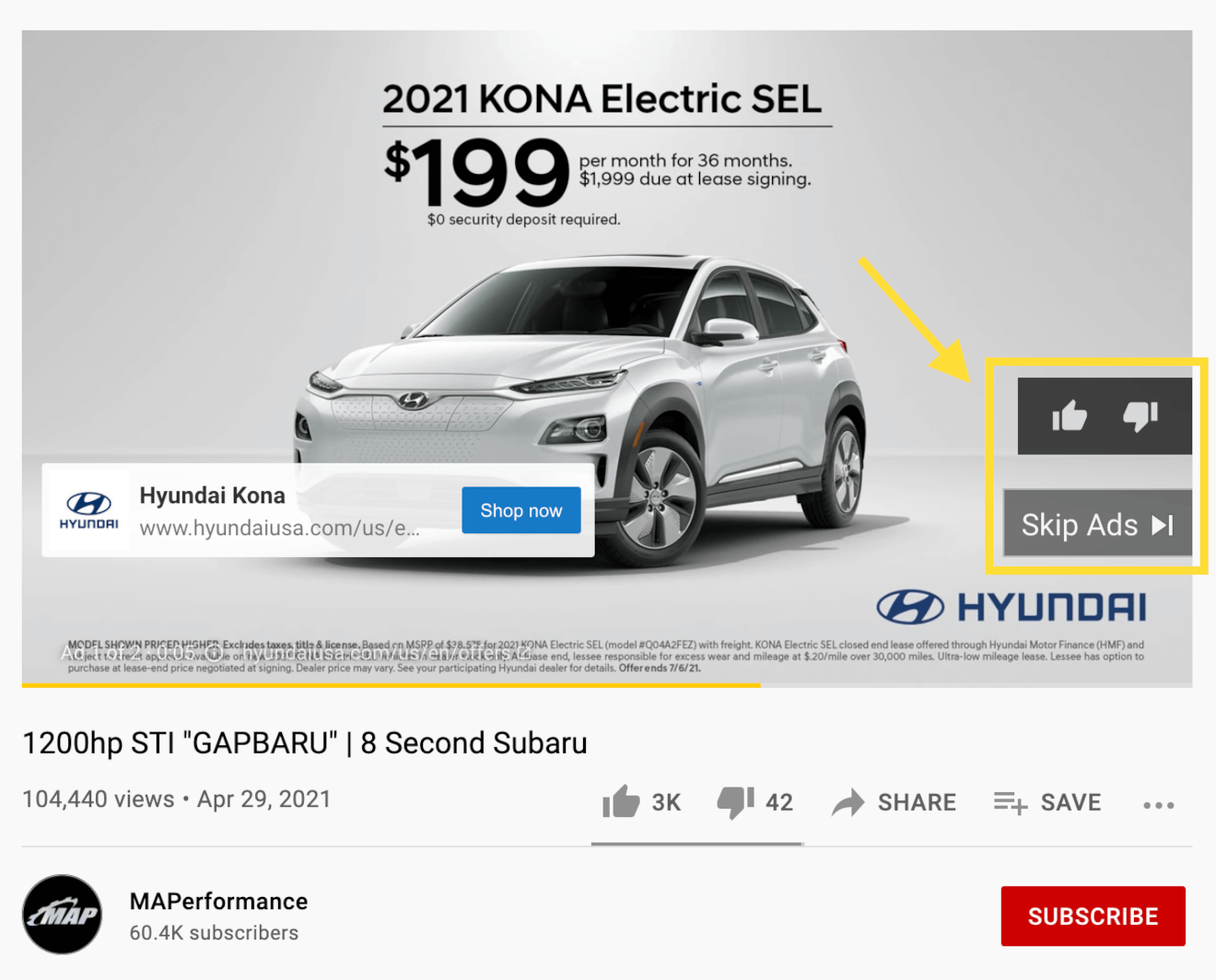
This has been the "default" method to make money with video-on-demand for a long time, but times are changing as payments and restrictions make it harder for creators to make a living.
Studies show that 96.5% of YouTubers struggle to earn a living above the poverty line. So, though, AVOD models can be rewarding, we'd recommend you choose either SVOD or TVOD.
💡 Launch, Grow, and Retain using SVOD…
We highly recommend you explore SVOD to sell your videos online , although the Uscreen platform does support TVOD as well.
We've seen the most success across the widest range of industries using this model. It's simple, scalable, and sustainable.
If you'd like to learn more about whether SVOD is the right choice for your business, we'd love to help you find out.
You can contact us directly – with no commitment, promise! – and we'll help you figure out if it's the right choice for you.
5: Create Your High-Quality Video Content
Content is at the center of your new online video business.
If you have the skills to produce and edit your own video, you can ideally create your own video material. Here's a great guide from our resident video content creator, Daniel, about great ways to improve your content without spending any money:
Click here to watch the video -> youtube.com/watch?v=s-ucerWoFqM
Alternatively, if you have the budget, you can hire a video production team to help you take care of it if that'll make you feel more comfortable.
We're limited in what we can tell you about how to create your video content – everyone's creative process is different – but what we can tell you is to think about your viewer.
It's important to consider elements like:
- Where will the viewer be watching this video?
- What equipment do they need?
- Which supporting materials can I provide to improve their results?
For example:
If your videos are focused on instructional content and online courses, you can use additional resources to support your tutorials and help your students get a dynamic education.
Consider including:
- PDFs.
- Podcast episodes (have you listened to our Video Entrepreneur Podcast by the way?)
- Audio files.
- Ebooks.
- Slides.
Or, if you're offering a fitness program, you can complement your training with a weekly menu of healthy meals!
6: Upload Your Videos
Once you have created enough videos to start selling, you'll need to upload them to the video streaming platform of your choice.
If you're using Uscreen…
We've designed the uploading process to be as quick and easy as possible. All you have to do is drag and drop the videos into the "Content" area of your Uscreen dashboard:
You can upload your videos quickly and securely from any browser, or you can sync with your Dropbox account to upload directly from there. (Here's how!)
We format all of your videos to be optimized for both desktop and mobile device viewing. After all, 54% of website traffic comes from smartphones, and we want you to be prepared!
(This is also why we recommend you look at native OTT apps for your video business. More on those in step 12!)
However…
We do recommend compressing your videos and optimizing your file sizes. You can find the most current uploading guidelines in our Uscreen Help Center guide here.
7: Organize Your Content
With your videos uploaded, it's time to organize your content catalog. This means categorizing and displaying your videos in an optimal way that will boost sales and improve user experience.
We have a saying here at Uscreen: your content catalog is your product.
When we talk about "sell videos online", what we're really talking about is selling the entirety of your video library. It's why people sign up and what keeps them coming back.
Making sure your catalog is optimized and easy to use has benefits for both your marketing efforts and your existing paying customers. Why?
Because a well-presented catalog really showcases to potential customers what your platform is about. It's a little like the online video version of window shopping.
And, when videos are easy to find and watch, it can increase customer retention. After all, your videos are only as good as the customer's ability to find them!
If you're using Uscreen, we allow you to organize your content using 4 different components:
- Catalog: your full library of content, displayed by categories.
- Categories: the genres that contain your videos and collections.
- Videos: your individual videos within a category.
- Collections: a group or series of videos to be watched together, within a category.
This gives you a lot of options to create a structure with your videos.
The way you structure your content will depend a lot on your niche and what you're creating.
For example:
If you create and share indie films, you might split your content out categories based on genre, like GayBingeTV have here:
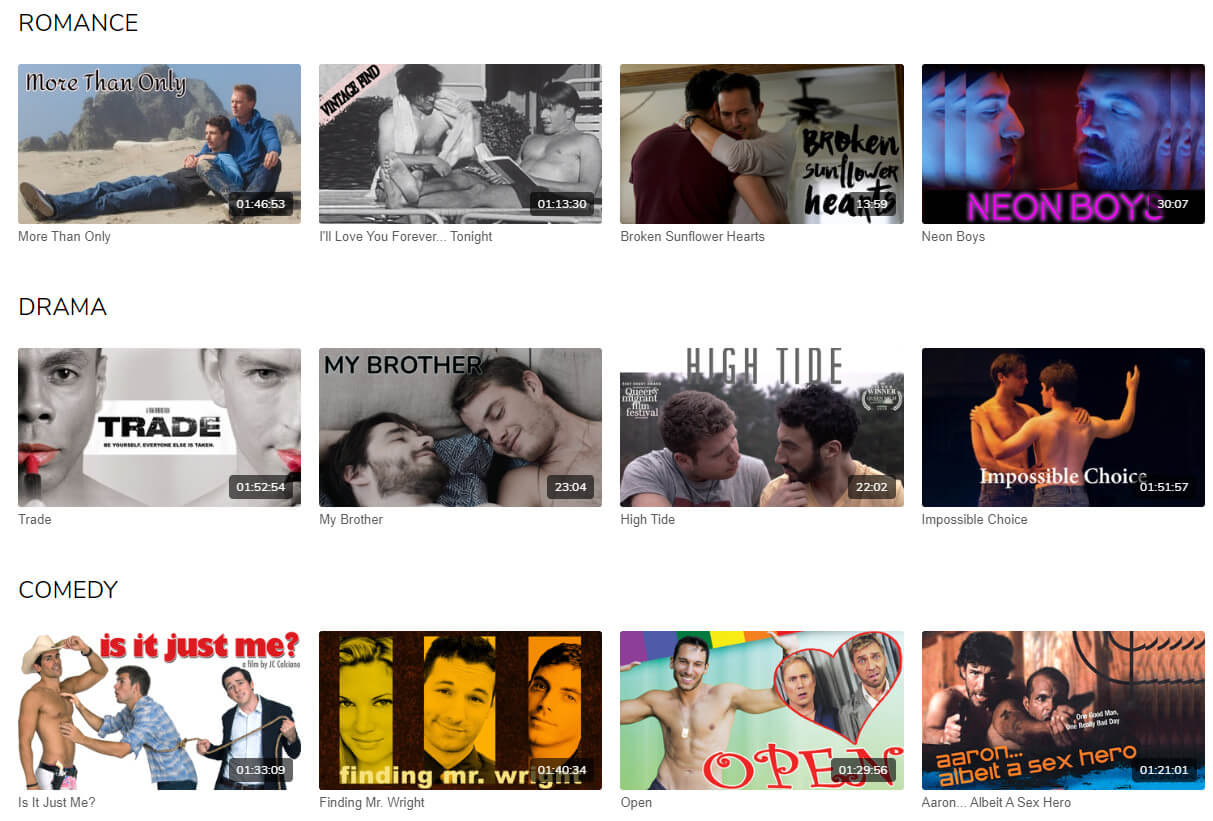
Alternatively…
If your content focuses on sports drills like Bballbreakdown does, then you may want to create categories based on the different skills being worked on:
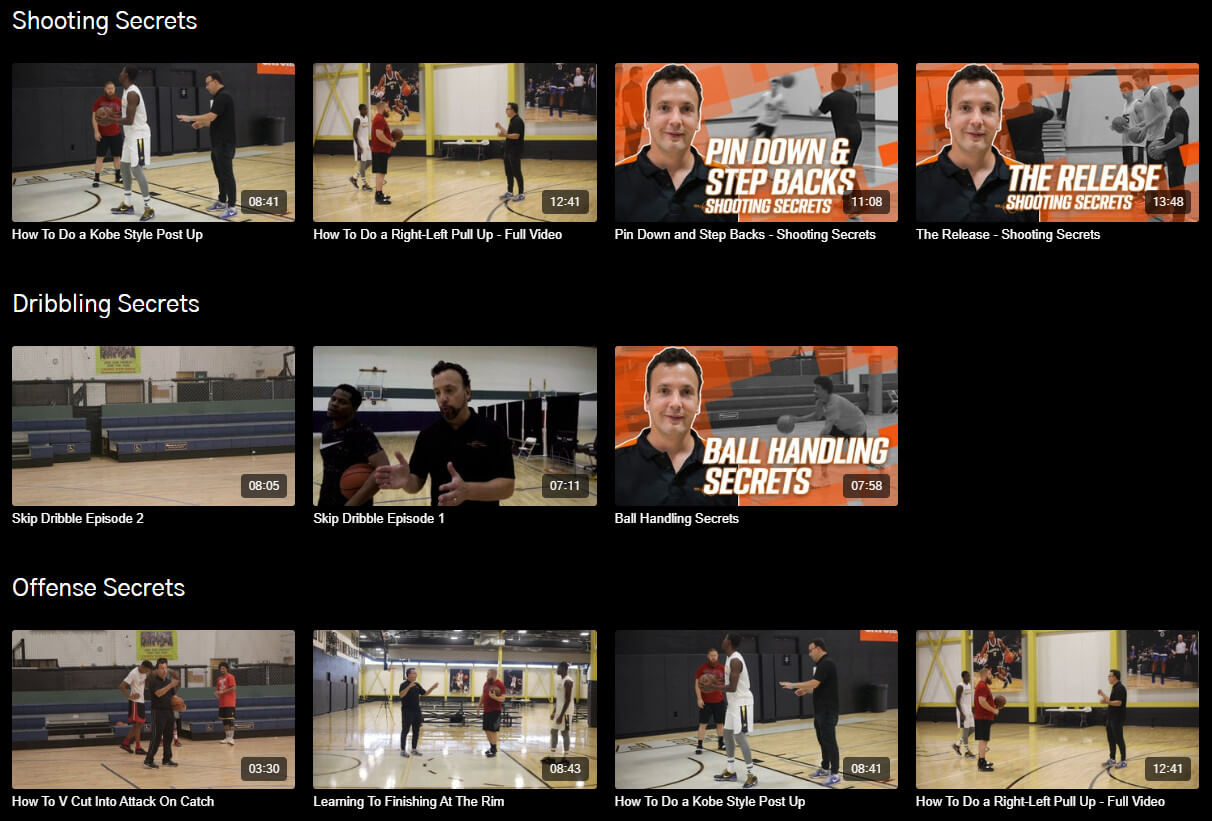
If you want to get even more specific, you can add Custom Filters to make relevant videos even easier to find. For example:
You can add a "workout duration" or "training type" tag to your fitness content, so the user can quickly find the right video for their coming session like Barre Centric does here:
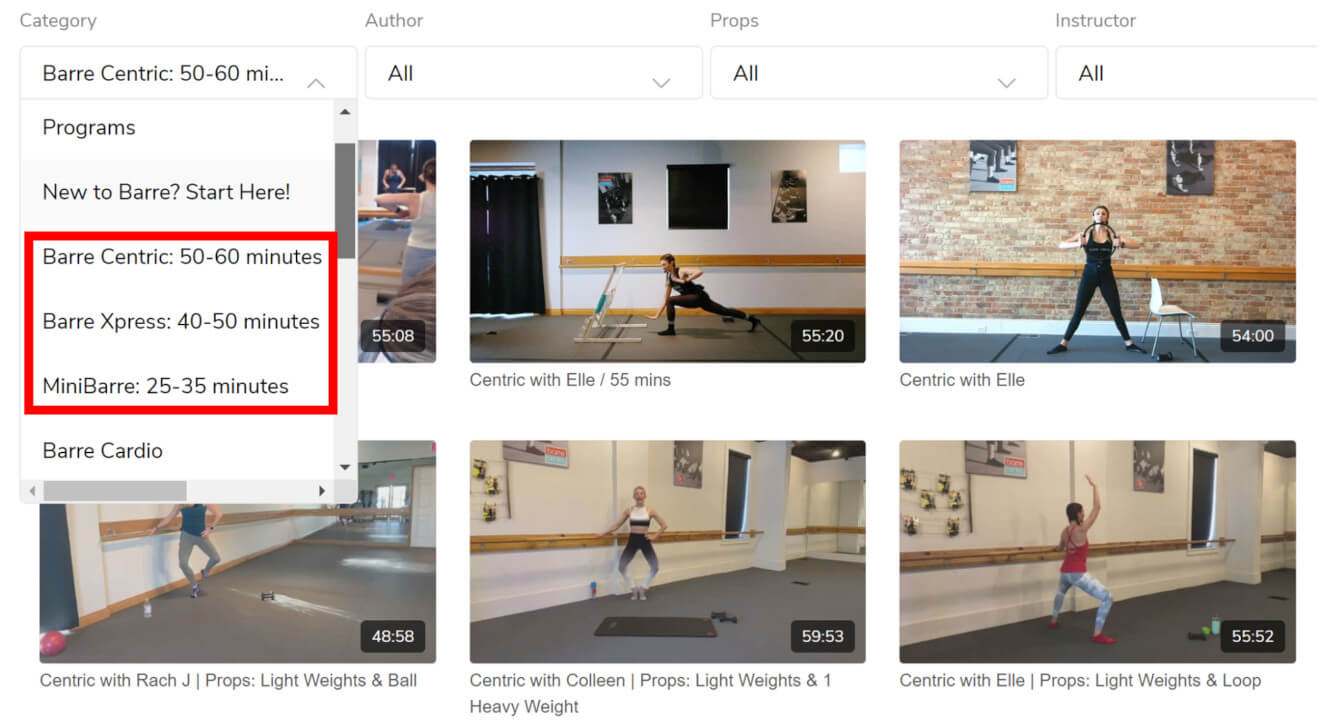
You can learn more about how to strategically organize your video content catalog in our guide below.
8: Customize Your Video Website
Okay, now for the fun part…
It's time to customize your video website.
The video monetization platform you've chosen should give you the option to customize your own website and add your branding. Let's make your video website shine!
If you're using Uscreen, we have a number of customization options you can choose from.
Our most popular tool is our plug-and-play page builder, which lets you build stunning homepages and marketing pages. You can choose from any of our "core" themes…
…and then edit the specific elements – like adding images, headlines, and text – to create a page that lets your brand and product shine through:
Or, if you'd prefer more of a pre-made solution, you can pick from any of our 19 customizable themes that will have your site up and running quickly and easily.
Now…
How you choose to customize your video streaming website is up to you. But one of the key things to remember is brand consistency across your online presence.
You need to consider the…
- logos
- colors
- images
- fonts
…that you're using on other platforms – like social media or YouTube – and make sure everything matches up nicely. This will help your customers know they're in the right place!
For example:
CarpFix is an educational video platform that teaches people about carp fishing. They've used our page builder to create the home page of their video website:
You can see that they keep a consistency between the marketing platforms and video website, by using the same styles of photography, tone of voice, and logo images:
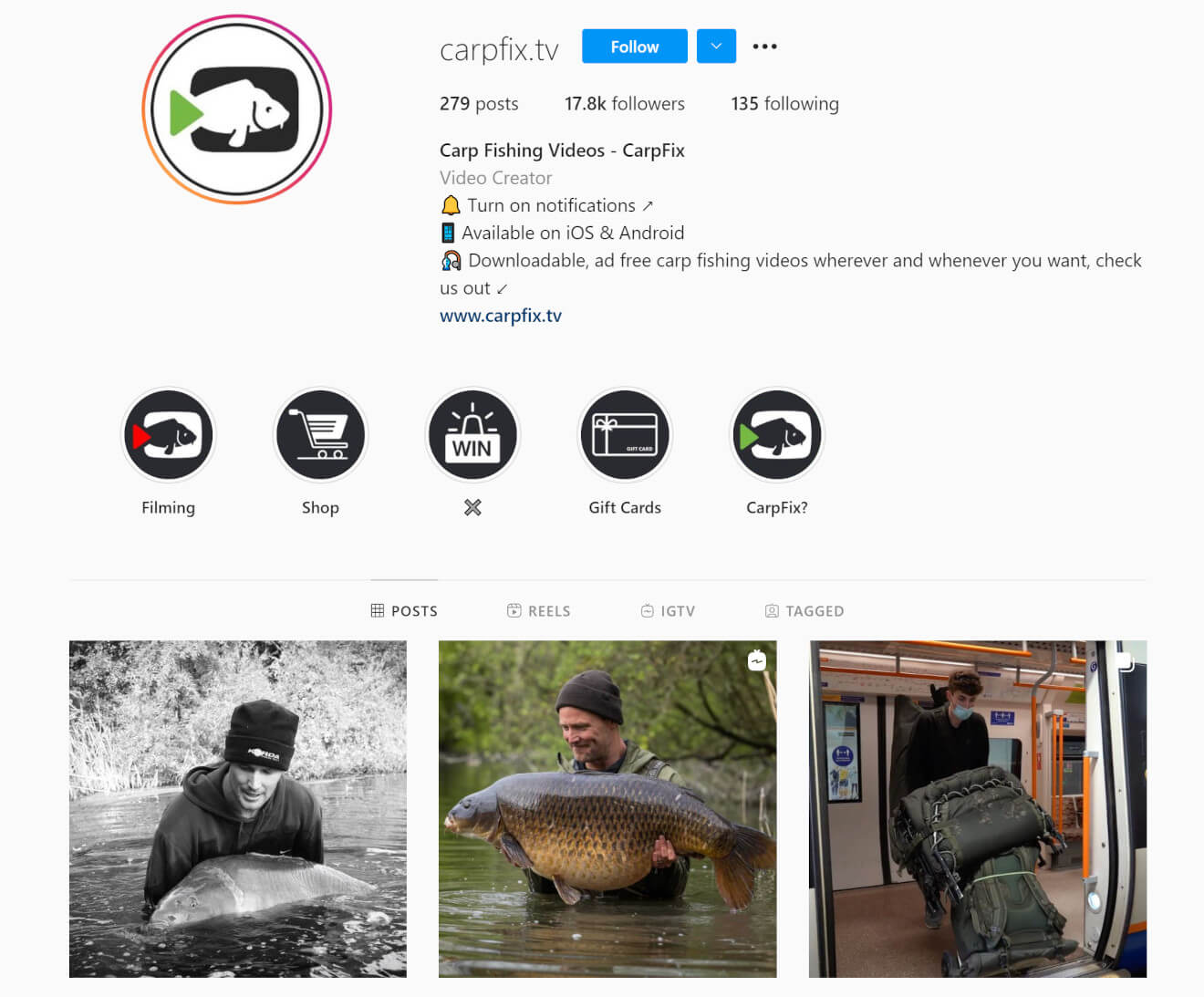
This subliminally assures the website visitor that they're in the right place, and they're visiting the website of a brand they've already interacted with and trust.
You can learn more about how to build your very own video website with Uscreen in our help center guides right here.
9: Setup Your Marketing Tools
Once your site is up and running, it's time to start promoting it.
We're going to cover how to do this in the next 2 steps. Let's start by setting up the marketing tools that will help you reach more people and earn more money.
We recommend you set up these 3 marketing tools before you launch:
- Email list : a tool that allows you to collect the email addresses of your potential customers (eg. MailChimp).
- S u bscription upsell : a tool that allows you to offer point-of-purchase upsells of your subscriptions to customers.
- Abandoned cart tool : a tool that automatically contacts people who leave the sales process before completing their purchase.
These tools will help you to build a solid foundation for the long-term marketing of your business, as well as recoup any potential "lost" income from on-the-fence customers.
Depending on the video monetization platform you've chosen, you may need to invest in 3rd party software and integrations to get these.
At Uscreen…
We're proud to say we're the only platform that helps you launch, grow, and retain customers. We give you almost all of the tools you need to grow your video business as standard.
In your marketing dashboard, you can access a full suite of tools that help you do all of the things in the list above, as well as:
- View in-depth analytics.
- Create coupons.
- Offer gift cards.
- Reduce churn.
And, if you have your own preferred tools – like email marketing software – you can use our integrations to mix and match to create a personalized experience.
You can learn more about Uscreen's video marketing tools below:
Click here to watch the video -> youtube.com/watch?v=5tHtH4FS3MA
10: Promote Your Video-On-Demand Platform
With your marketing tools in place, you can start spreading the good word about your new platform!
The way you have to promote your video on demand website will vary based on the needs of your audience, as well as their demographics and preferences.
For example:
- If you create short-form tutorials targeted at teenagers, you'll probably need to be more active on social media platforms like TikTok.
- If you create long-form entertainment content for millennials, you'll probably need to be on Instagram and look for opportunities in popular publications.
But, there will always be some core ways you can read your audience online. And, we have guides to help you do all of them!
Take a look at the links below for specific strategies you can follow to begin marketing your video business:
- How To Generate Buzz For The Launch Of Your VOD Website.
- The Social Media Guide for Driving Traffic To Your Video Streaming Site.
- How To Repurpose Your Paid Content For Social Media.
- Paid Advertising For Your VOD Website – Full Guide.
11: Add Emotional Experiences With Live Streaming
Live streaming has become a key part of running a video business.
In 2020 – when COVID-19 had us all cooped up at home – we saw watch time for live content go up by around 250%. In fact, our internal research into Uscreen customers found:
- Minutes live-streamed for Yoga and Meditation increased by 392%.
- The number of live events grew by 300%.
- Minutes live-streamed for eLearning increased by 980%.
That means subscribers are now actively seeking out live-streamed content in the post-pandemic world. Why?
Because live streams are emotional experiences.
They build a stronger connection between you and your audience and create opportunities for them to engage in your community via live chats.
The emotional aspect helps increase engagement and retention. Research shows that live streams can hook viewers between 10 and 20 times longer than pre-recorded videos.
This combination of community, emotion, and engagement is perfect for ensuring the long-term success of your business.
With Uscreen you can host live streams – such as webinars, Q&As, or even gaming streams – from within your platform, and even save the recording to your video library to watch later.
Better still, with our community features – like live chat – your audience can interact with each other and bring a whole new dimension to your content.
You can learn more about how to get started with live streaming in the video below:
Click here to watch the video -> youtube.com/watch?v=SHctkkO-oMs
12: Expand Your Offer With OTT Apps
The future of video is OTT apps.
OTT Apps, or Over-The-Top Apps, allow users to view your content natively on devices like smartphones and smart TVs. And, they are in high demand!
In fact, eMarketer predicts that by 2022 people will spend more than an hour a day watching videos on a subscription OTT service.
They've become an essential part of running an online video business because they allow your subscribers to access your content seamlessly on their favorite devices.
They just click the app, log in, and they can access all of their video content in one easy-to-find place. Just like how you'd use Facebook or YouTube on your phone.
Having these OTT apps available can increase your audience and revenue by up to 30%.
Uscreen customers are easily able to add OTT apps to their business – all they have to do is request the apps, and the Uscreen team takes care of the rest.
You can learn more about OTT apps, and why they're important, in the video below:
Click here to watch the video -> youtube.com/watch?v=IlBMWUp0hj0
How Not To Sell Videos Online (Or, Why YouTube Monetization Is A Thing Of The Past!)
There have been massive changes in the video industry over the last few years. And, the old ways of doing things have become obsolete.
It used to be that you could upload your videos to YouTube and generate a decent income from the advertising revenue. But, those days are long gone.
Even before the COVID-19 pandemic, YouTube was demonetizing a large number of creators' videos, meaning that the majority made an income below that sat below the poverty line.
And, at the height of the pandemic – where people were paying more attention than ever to YouTube, and you would expect channels to earn more – payments to creators plummeted.
Uploading your videos to YouTube in order to monetize them has gone the way of the Dodo, MySpace, and Napster. Especially now that the odds of "making it" on the platform are as great as making it in Hollywood!
Instead…
If you want to sell your videos online – in any niche, for any audience – you need a platform that you own. It's the only way to build a future-proofed business.
YouTube can still be a great tool to help you grow that business. But, it should be used as a marketing tool alongside a standalone video monetization platform like Uscreen.
You can see our guide on how to do that right here:
In fact, let's take a look at a business that successfully made the jump from YouTube to Uscreen and saw near-instant results in her income…
Your Book of Memories – From YouTube to Uscreen
Your Book of Memories (YBM) is a video streaming service that teaches thorough DIY memory album instructional tutorials in high-quality sound and light.
Frances Long, founder of YBM, originally started on YouTube in 2017, and quickly experienced the limited potential of YouTube monetization.
Despite her YouTube channel growing quickly to over 17,000 engaged subscribers, and accumulating over 600,000 views on her channel, YBM was generating a meager $380 a month in YouTube ad revenue.
Frances realized she had to monetize her videos somewhere other than YouTube if she wanted to keep doing what she loves and see a fair return of her investment in time and money.
So in January of 2019, Frances joined Uscreen to transform YBM into a highly profitable private video streaming service.
YBM saw an 855% increase in monthly revenue in just 4 months, without the need to produce any new videos. 3.7% of YBM's YouTube subscribers converted to the paid streaming service.
So instead of relying on YouTube as a video monetization platform, Frances now uses her YouTube channel as a lead generator to her paid content on YBM.
Feeling Inspired?
Sell videos online. Reach the people you want to reach. Spread the message you want to spread. And make the money you want to make.
How To Sell Videos Online
Source: https://www.uscreen.tv/blog/sell-videos-online/
Posted by: farrellwortur.blogspot.com

0 Response to "How To Sell Videos Online"
Post a Comment